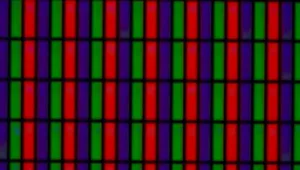
Ever had one of those weeks? It started well, with a number of catch up jobs done, and by the middle of the week, I could see space to do some ‘ought to do’ jobs. However, the world of IT and clients intruded and all those precious hours of ‘discretionary time’ got absorbed. Isn’t it always the same? I have long had a theory that computers have ‘stress detectors’ that know when you are under pressure and break at that moment (printers have double sensitivity!) but maybe IT systems also have ‘lack of stress’ detectors that turn on the bugs just when you have some free time!
We started to prepare for CES in earnest this week and there will be four of us at the event, myself, Chris, Ken and Steve and we have been dividing up the tasks. Of course, there are several vendors that we all want to see and some that nobody really wants to see, so there is a bit of negotiation. I’m looking at the supply chain, IT and mobile, Chris is going to focus on TVs and HDR, Ken is majoring on automotive and Steve will be looking at AR and VR. If you have something to talk about, I’ve put the contacts at the end of the article.
One of the things that is already obvious is that a number of vendors are simply not attending this time. I reckon that more than 20 of the companies that we had on the list last year are not this time. Clearly, the slowing down of many of the main CE markets is having an effect.
There are a number of things I’m looking forward to seeing and this week, Ken wrote about one of them in his DD article. That is, the use of QDs in place of the colour filter. This is a topic I have been intrigued with since SID in 2016, when Nanosys revealed that it is working on the technology. It has the potential to double the light output of LCDs as well as solving the viewing angle problem. I had planned a deeper dig into the technology this week, but IT intervened, so it has been deferred.
Now, I suspect that the key advantage of this QD system is not only in doubling the output, but in allowing a halving of the input of light. In TV, that will mean that it will make it easier to use mini-LEDs in the backlight to make very slim, direct-lit LCDs that can challenge OLED for black level. In the mobile space it could mean a big jump in battery life, although I haven’t heard much discussion of this, so far.
DSCC has suggested that there might also be an implementation of QD on glass to use a glass light guide plate for very slim TVs. I’m not so sure about that, although it might allow very slim TVs, monitors and notebook LCDs and would be simpler because there is no need to change the LCD cell, but it won’t bring the same level of efficiency advantage. It may be that this is one more option to move QDs down into the mainstream if the cost equation is right (and such a development might be a factor in 3M deciding to get out of the QD film business, one of the big surprises of the year, for me. (3M to Retire QDEF).
Anyway, I still reckon that one of the highlights of CES will be new LCDs with miniLEDs and, possibly, quantum dots on the colour filter.
Bob ([email protected])
Chris Chinnock <[email protected]>
Ken Werner <[email protected]>
Steve Sechrist <[email protected]>

